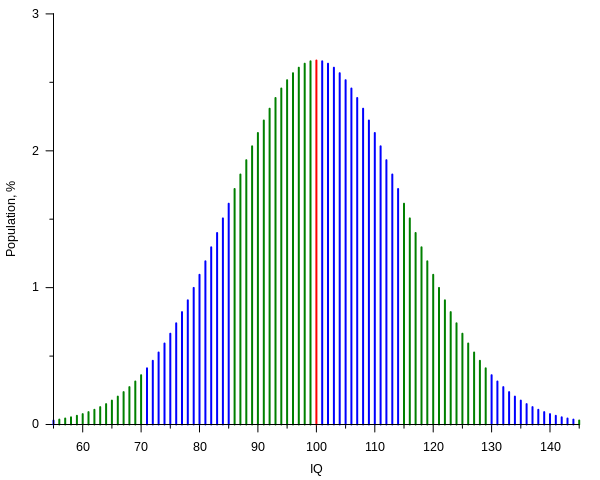中點是100, σ = 15. 160 = 100 + 4σ
IQ_curve.svg (SVG file, nominally 600 × 480 pixels, file size: 12 KB)
IQ = 160 3萬人裏就有一個(out of range of ± 4σ: 1 in 15,787。隻考慮單邊: 1 in 15,787 x 2)!
Higher deviations
Because of the exponential tails of the normal distribution, odds of higher deviations decrease very quickly. From the Rules for normally distributed data:
Thus for a daily process, a 6σ event is expected to happen less than once in a million years. This gives a simple normality test: if one witnesses a 6σ in daily data and significantly fewer than 1 million years have passed, then a normal distribution most likely does not provide a good model for the magnitude or frequency of large deviations in this respect. In The Black Swan, Nassim Nicholas Taleb gives the example of risk models for which the Black Monday crash was a 36-sigma event: the occurrence of such an event should instantly suggest a catastrophic flaw in a model.



